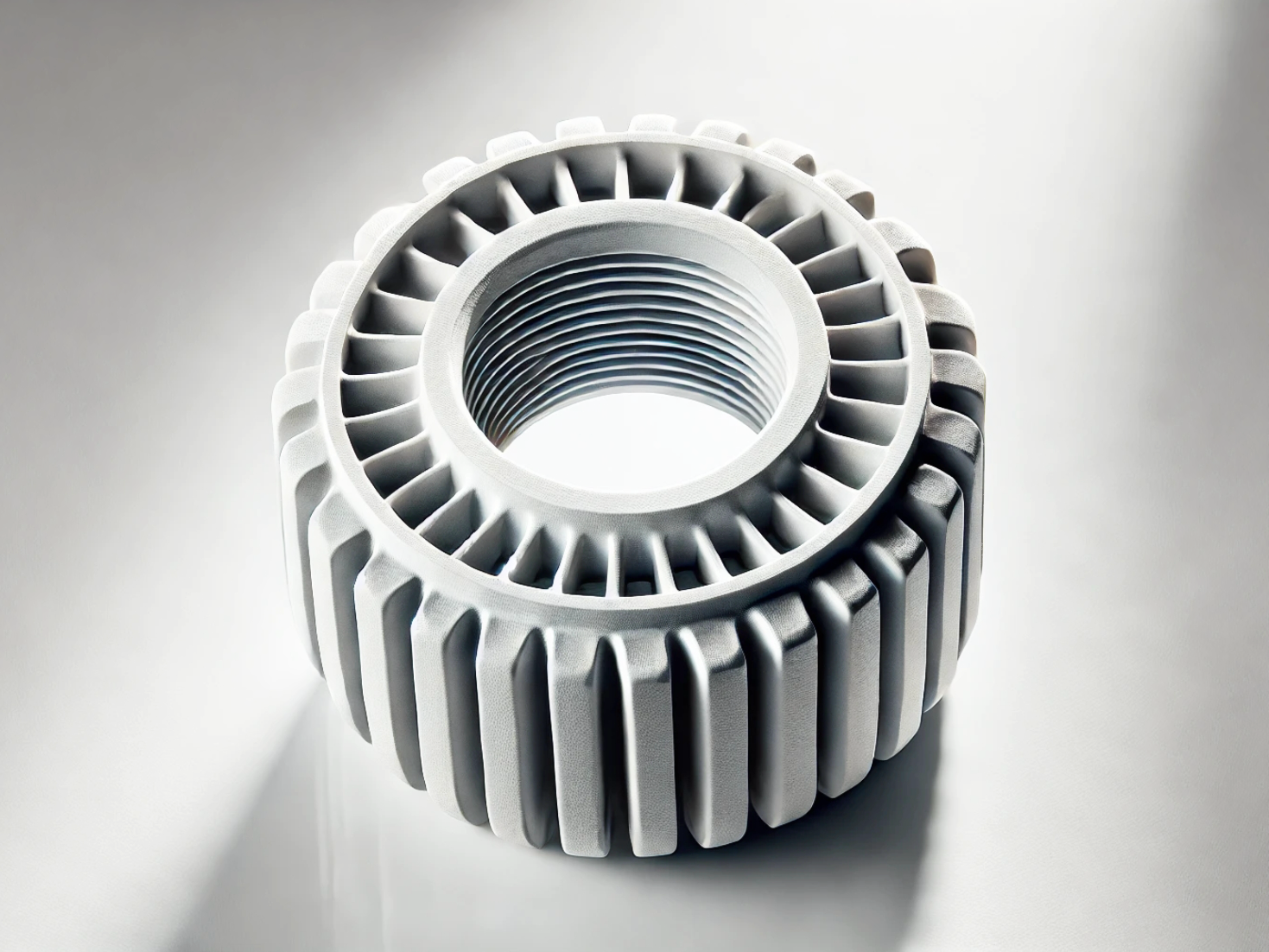Alumina (Al2O3) 3D Printing: High-Wear Ceramic Parts for Mechanical Seals & Electrical Insulators
Introduction
Alumina (Al₂O₃) 3D printing enables the precise manufacturing of high-wear ceramic parts, offering superior hardness, electrical insulation, and corrosion resistance. Using advanced ceramic 3D printing technologies such as Vat Photopolymerization and Material Extrusion, components like Alumina (Al₂O₃) mechanical seals, bushings, and electrical insulators can be produced with complex geometries and tight tolerances.
Compared to traditional forming methods, Alumina 3D printing shortens production cycles, reduces tooling costs, and allows greater design flexibility, making it ideal for high-performance industrial applications.
Applicable Material Matrix
Material | Purity (%) | Flexural Strength (MPa) | Hardness (HV10) | Dielectric Strength (kV/mm) | Max Operating Temp. (°C) |
|---|---|---|---|---|---|
99.5% | 400–500 | 1500–1800 | >15 | 1600 | |
96% | 320–400 | 1300–1500 | >14 | 1500 | |
85% | 250–320 | 1000–1300 | >12 | 1450 |
Material Selection Guide
Alumina 99.5%: Ideal for precision mechanical seals, high-voltage insulators, and wear-resistant components operating at extreme temperatures up to 1600°C.
Alumina 96%: Commonly used for semiconductor equipment parts, electrical feedthroughs, and general industrial insulators.
Alumina 85%: Suitable for cost-effective structural parts requiring good hardness, moderate strength, and excellent chemical resistance.
Process Performance Matrix
Attribute | Ceramic 3D Printing Performance |
|---|---|
Dimensional Accuracy | ±0.1 mm |
Density | >98% Theoretical Density |
Minimum Wall Thickness | 0.5–1.0 mm |
Surface Roughness (As-Sintered) | Ra 2–5 μm |
Feature Size Resolution | 100–200 μm |
Process Selection Guide
High Hardness & Wear Resistance: Alumina components offer hardness up to 1800 HV10, outperforming metals in abrasion and chemical resistance.
Electrical Insulation: Superior dielectric strength makes Alumina ideal for high-voltage, high-frequency electrical insulation applications.
Thermal Stability: Excellent performance in continuous-use temperatures exceeding 1400°C, critical for aerospace, energy, and manufacturing industries.
Complex Geometries: Enables fabrication of intricate internal channels, thin-walled structures, and lattice designs without additional tooling.
Case In-Depth Analysis: Alumina 99.5% Mechanical Seals for Chemical Pumps
A chemical processing company needed custom mechanical seals to withstand aggressive corrosive media and high mechanical loads. Using our Alumina (Al₂O₃) 3D printing service with 99.5% purity material, we manufactured seals achieving flexural strength over 450 MPa and hardness around 1700 HV10. The precision-engineered seals exhibited minimal wear after extensive chemical exposure and mechanical cycling. Post-processing included precision CNC machining to achieve sealing surfaces within ±0.01 mm flatness.
Industry Applications
Manufacturing and Tooling
Mechanical seals and bearing sleeves for chemical pumps.
Wear-resistant nozzles for abrasive fluid dispensing.
Ceramic bushings and valve seats.
Energy and Power
Electrical insulators for high-voltage power systems.
Ceramic spacers and isolators in renewable energy systems.
Protective components in nuclear and thermal plants.
Electronics and Semiconductors
Insulating substrates for semiconductor manufacturing.
High-frequency insulators and RF components.
Dielectric supports in microelectronics packaging.
Mainstream 3D Printing Technology Types for Alumina Ceramic Parts
Vat Photopolymerization (SLA/DLP): Best for high-resolution ceramic parts requiring fine detail and smooth surfaces.
Material Extrusion: Suitable for larger and thicker-walled ceramic parts with moderate geometric complexity.
Binder Jetting: Effective for economically producing larger batches of ceramic parts before sintering.
FAQs
What grades of Alumina are suitable for 3D printed mechanical seals and insulators?
How does Alumina 3D printing compare to traditional ceramic forming methods?
What post-processing steps are required for Alumina 3D printed parts?
What are the temperature limits of Alumina ceramic components?
Can Alumina 3D printing achieve complex internal geometries for industrial applications?

